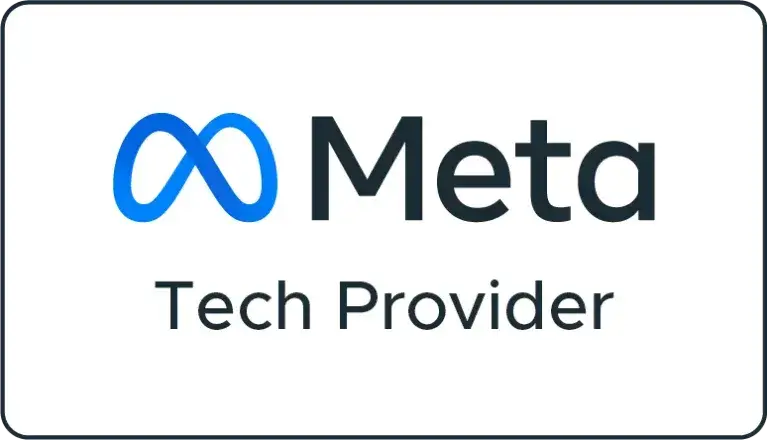Introduction
In the realm of digital marketing, the success of an advertising campaign largely hinges on one critical factor: targeting the right audience. The ability to pinpoint your ads towards users whose interests and behaviors align with your product or service can dramatically enhance both the effectiveness and efficiency of your marketing efforts. Among the various audience targeting options available, two of the most pivotal are in market audience vs affinity audience. Understanding the nuances between these can help marketers optimize their strategies to better meet campaign goals and maximize return on investment (ROI).
Overview Of Audience Targeting In Digital Marketing
Audience targeting involves segmenting consumers into distinct groups based on shared characteristics, such as demographics, interests, behaviors, and more. This practice allows marketers to tailor their messaging and offers to resonate deeply with specific segments, leading to higher engagement and conversion rates. In digital marketing, where ad space is both competitive and costly, efficient targeting is not just beneficial; it’s essential.
Importance Of Choosing The Right Audience Type
Choosing the correct type of audience to target can be the difference between a campaign that flops and one that flies. Whether you aim to raise brand awareness, increase site traffic, or drive sales, selecting the right audience type—in-market audience vs affinity audience—plays a pivotal role. Each audience type offers distinct benefits and suits different strategic needs. As we delve deeper into this article, we’ll explore what each audience type entails, their key differences, and guidelines on how to deploy them effectively in your advertising campaigns.
What Are Affinity Audiences?
Affinity audiences are designed to help marketers reach people based on a holistic view of their lifestyles, passions, and habits. These audiences are built from aggregated browsing behavior and frequent engagement patterns, allowing advertisers to target consumers with a deep interest in specific subjects.
Definition Of Affinity Audiences
Affinity audiences consist of users grouped based on their long-term interests and lifestyles. Google and other digital platforms identify these groups by analyzing user activities, search histories, and content consumption patterns over extended periods. This approach helps marketers to connect with audiences who have a strong affinity for relevant topics or activities, such as fitness enthusiasts, automotive fans, or culinary aficionados.
Characteristics Of Affinity Audiences
Affinity audiences are characterized by their broad and enduring interest in particular subjects. These traits make them ideal for:
- Brand Building: They help in establishing brand relevance and resonance among consumers who are likely to be naturally interested in related products or services.
- Long-term Engagement: Due to their stable interests, affinity audiences are more likely to engage with content and ads repeatedly over time, fostering lasting relationships.
- Lifestyle Marketing: Affinity groups allow for lifestyle-based marketing approaches, where brands can integrate their offerings into the everyday life narratives of potential customers.
Best Practices For Using Affinity Audiences
To effectively leverage affinity audiences in marketing campaigns, consider the following best practices:
- Align Campaign Messages with Lifestyle Interests: Craft your marketing messages to resonate deeply with the specific lifestyles and interests of the affinity group.
- Use Broad Messaging for Brand Awareness: Since affinity audiences are more about interests than immediate buying intent, use broader messaging that appeals to their general lifestyle rather than hard-sell tactics.
- Consistent Engagement: Regularly introduce new content and offers that align with the evolving aspects of their interests to keep the audience engaged over time.
By understanding and applying these principles, marketers can maximize the effectiveness of their campaigns targeted at affinity audiences, enhancing brand visibility and engagement among key demographic groups.
What Are In-Market Audiences?
In-market audiences consist of users who are actively researching and considering products or services similar to what you offer. This audience type is crucial for capturing potential customers at a critical moment in their buying journey, often right before a purchase decision.
Definition Of In-Market Audiences
In-market audiences are identified by their recent purchase intent signals. These signals are gathered from users’ search queries, browsing behaviors, and content consumption that indicate a readiness to make a purchase or engage in a transaction. Digital advertising platforms use sophisticated algorithms to segment these users, providing marketers with a powerful tool to target potential customers who are more likely to convert soon.
Characteristics Of In-Market Audiences
In-market audiences are characterized by:
- High Purchase Intent: They have demonstrated a clear intent to buy, making them highly valuable for conversion-focused campaigns.
- Dynamic Nature: The composition of in-market audiences can change rapidly as new users enter the decision-making phase and others make a purchase or lose interest.
- Relevance to Specific Campaigns: Best suited for promotions, special offers, or product-specific campaigns where timing and relevance are critical.
Best Practices For Using In-Market Audiences
To effectively leverage in-market audiences in your digital marketing strategies, consider the following best practices:
- Timely and Direct Messaging: Use direct and compelling calls-to-action in your ads, as these users are already in the later stages of the buying process and may need only a slight nudge to convert.
- Offer Incentives: Discounts, limited-time offers, and free trials are effective in converting users with high purchase intent.
- Continuously Refresh Your Creative: Keep your ad creative fresh and engaging to stand out, as in-market audiences are likely being targeted by competitors as well.
In-market audiences provide a powerful opportunity to reach users who are at a critical point in their purchase journey, offering a window to influence their decision and increase conversion rates effectively.
Comparing In-Market Audience Vs Affinity Audience
Understanding when to use in-market audiences versus affinity audiences is crucial for maximizing the effectiveness of your digital marketing strategies. Each audience type has unique strengths that align with different advertising objectives.
Key Differences In Usage And Effectiveness
- Conversion vs. Engagement: In-market audiences are more likely to convert in the short term due to their current shopping behavior and purchase intent. In contrast, affinity audiences are ideal for longer-term engagement and brand building, as they are defined by their enduring interests and lifestyles.
- Campaign Objectives: In-market audiences are best for direct response campaigns where immediate sales are the goal. Affinity audiences are more suited to awareness and engagement campaigns that nurture a long-term relationship with potential customers.
- Content Strategy: Content for in-market audiences should be focused on conversion optimization, featuring clear calls-to-action, product benefits, and special offers. For affinity audiences, content should cater to interests and lifestyles, providing value through informative or entertaining material that enhances brand affinity.
When To Use Each Audience Type
- Launching New Products: When launching new products or services, targeting in-market audiences can drive immediate purchases from users already seeking similar solutions.
- Building Brand Loyalty: For brands looking to build or reinforce loyalty, affinity audiences offer a way to connect on a deeper level, matching the brand’s value proposition with the audience’s long-term interests.
- Seasonal Promotions: In-market audiences are ideal for seasonal promotions and sales, as these users are already in the mindset to make purchases related to the season.
- Content Marketing Campaigns: Affinity audiences respond well to content marketing campaigns designed to engage users with high-quality content that resonates with their lifestyle choices and interests.
Integrating Audience Insights Into Your Campaigns
Combining insights from both in-market and affinity audiences can provide a comprehensive approach to digital marketing:
- Dual Strategy Deployment: Use both types of audiences in different phases of your marketing funnel—start with affinity audiences to build awareness and engagement, and target in-market audiences to capitalize on this foundation and boost conversions.
- Cross-Channel Marketing: Implement cross-channel marketing strategies where insights from affinity audience interactions inform more targeted in-market promotions across different digital platforms.
- Continuous Optimization: Continuously analyze the performance data from both audience types to refine your strategies, adjust targeting, and improve overall campaign effectiveness.
Effectively combining in-market and affinity audience insights can significantly enhance your digital marketing strategies, allowing for nuanced targeting that addresses different stages of the customer journey. Here’s how to synergize these insights for improved campaign performance:
Combining In-Market And Affinity Audiences
- Layered Targeting: Implement layered targeting by using affinity audience data to build brand awareness and establish a connection, then retarget those who engage with in-market tactics to drive conversions. This method ensures that you are not only reaching users interested in specific topics but also catching them at times when they are most ready to purchase.
- Sequential Messaging: Develop a sequential advertising strategy where messages to affinity audiences focus on brand values and storytelling, while messages to in-market audiences are more conversion-driven with clear calls to action. This helps move users smoothly from awareness to consideration and finally to the decision-making stage.
Tools And Platforms For Audience Analysis
Leverage advanced tools and platforms to gain deeper insights into your audiences and refine your targeting strategies:
- Google Analytics: Utilize Google Analytics to analyze the behaviors of your affinity and in-market audiences, identifying which segments drive the most traffic, engagement, and conversions.
- Facebook Insights: Use Facebook’s rich demographic data to understand the characteristics of your audiences on social media, tailoring your content and ads based on these insights.
- SEMrush or Ahrefs: These tools offer advanced audience analysis features, including overlap studies between different audience segments, helping you understand how different groups interact with your content.
Continuous Optimization
To maximize the effectiveness of using both audience types, continuous optimization based on performance data is essential:
- A/B Testing: Regularly test different combinations of affinity and in-market audiences with various ad copies and creatives to find the most effective mix.
- Feedback Loops: Establish feedback loops where ongoing campaign data informs future audience targeting and message refinement. This approach ensures that your strategies remain adaptive to audience responses and market changes.
- Performance Tracking: Set up specific KPIs for each audience type and monitor them closely to quickly identify areas for improvement or successful strategies that can be scaled.
Conclusion
Integrating both in-market and affinity audiences provides a comprehensive approach to digital marketing, allowing you to engage users at every stage of their customer journey. By understanding and applying the nuances of each audience type, marketers can create more targeted, relevant, and effective advertising campaigns. Whether you aim to increase brand loyalty with affinity audiences or boost immediate sales through in-market targeting, the key to success lies in strategic integration and continual optimization of your audience insights.













